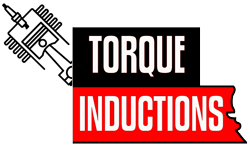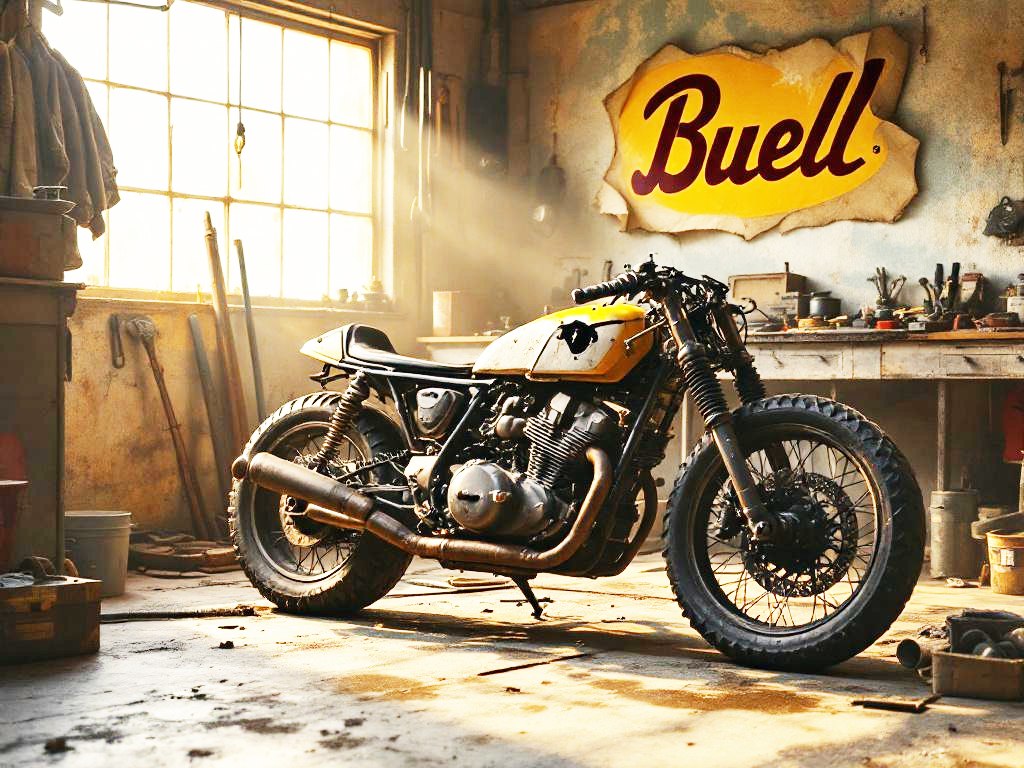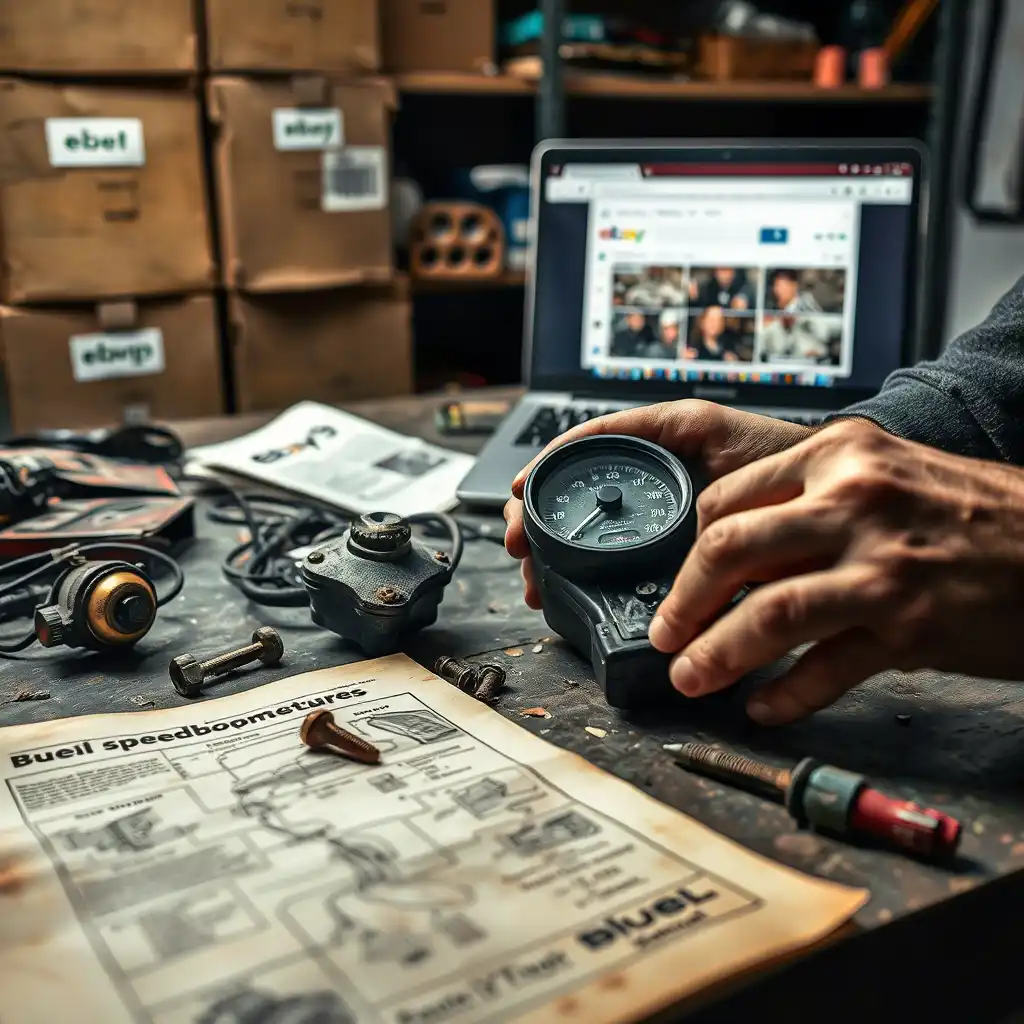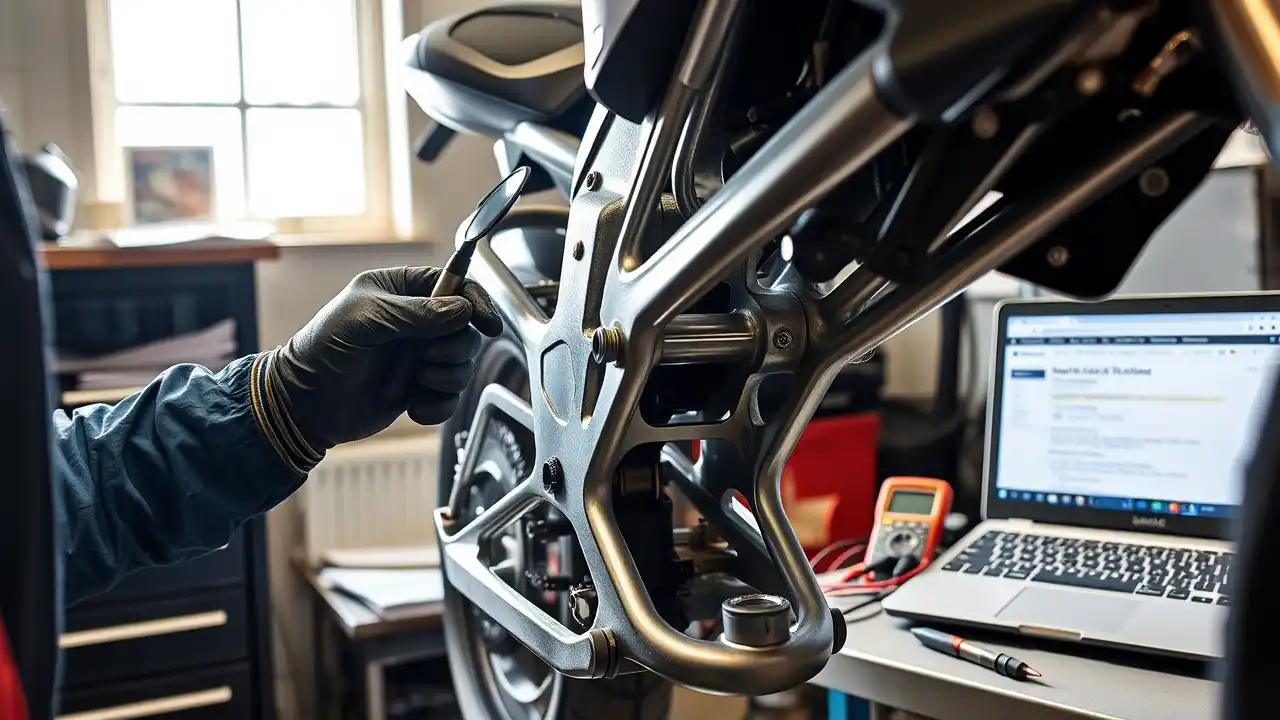- Posted on
- • Classic
What Are the Challenges of Restoring Buell Motorcycles?
- Author
-
-

- User
- Torque
- Posts by this author
- Posts by this author
-

What Are the Challenges of Restoring Buell Motorcycles?
There’s just something about getting an old Buell running again that hits different. These weren’t bikes meant for showrooms or Sunday cruises—they were built to be thrashed, to be pushed, and to be ridden like you stole them. But that go-fast, break-hard attitude that made them so much fun to ride also means they don’t age gracefully.
Restoring one isn’t like piecing together a classic Harley or a timeless Japanese twin. It’s a whole different beast—one that’ll test your patience, your wallet, and your willingness to dig through junkyards and forums just to find that one missing part.
Test Your Motorcycle Knowledge
The Buell Restoration Experience
I’ve had Buells in my garage for over 15 years. Rode ‘em, rebuilt ‘em, even dragged one out of a barn that had been sitting for nearly a decade. If there’s one thing I’ve learned, it’s that restoring a Buell isn’t just about wrenching. It’s about detective work—figuring out why things failed, where to find replacements when nobody seems to carry them anymore, and learning which parts you can substitute… and which ones you really shouldn’t.

If you're thinking about taking on a Buell restoration—or already got your hands dirty—you might be asking yourself: Why is this so much harder than rebuilding my old Sportster or Shovelhead?
Well, here’s the deal: Buells were always a little different. They had cool tech before it was mainstream, tight packaging, and some quirky design choices that made sense on the track but can drive a restorer nuts years later. It’s not impossible by any means—but it definitely keeps you on your toes.
Let’s talk about what really makes restoring these bikes a challenge—and how to actually get through it without pulling your hair out.
Why Is It Difficult To Source Parts When Restoring A Buell Motorcycle?
This is the biggest pain point—no question.
Buell never played in the big leagues like Harley or Honda. Even during its heyday, it was always the underdog—a niche within a niche. That meant smaller production numbers, fewer dealers, and now, years after the brand was pulled from the market, finding original parts can feel like trying to catch smoke with your bare hands.
You’ll search high and low for something as simple as a clean speedometer face or a working headlight switch, only to find every option online is cracked, corroded, or missing altogether. I remember once chasing down a specific tail light housing for weeks—every one I found either had broken mounting tabs or didn’t match the color of my bike.
Sometimes your only shot at finding what you need is tracking down a donor bike and tearing it down bolt by bolt. It might sound drastic—like buying a whole pig when you're really just after the ribs—but when you're working on a discontinued brand, that’s just how it goes.
Yeah, it can be maddening at times. There were days I wanted to toss my laptop out the window after another dead-end eBay search or a broken lead on a fuel tank. But weirdly enough, that hunt? That struggle? It becomes part of the experience. And when you finally land that one elusive piece—whether it’s a working speedo, a solid ECU, or even just a clean set of handlebar controls—it feels like hitting gold. You bolt it on, step back, and realize you’re one big chunk closer to bringing that Buell back to life. And that feeling? Totally worth it.
Real-World Parts Hunting Stories
For example, I once spent three months tracking down a clean instrument cluster for a 2006 XB9R. Every eBay listing was cracked, fogged, or missing the backlight. Eventually, I found one on a donor bike in Ohio through a private seller who wasn’t even listed online—he just happened to show up at a local bike swap meet.
You hear stories like this all the time in Buell circles.
- Some fairings and side panels were only used on specific model years.
- Handlebar switches changed slightly between 2007 and 2008 models.
- Fuel tanks were molded differently depending on whether the bike had ABS or not.
And then there are the truly obscure parts—like the rear brake light switch housing or the infamous "clutch diaphragm spring" that seems to vanish from inventory every time you need it.
Your best bet? Join the forums. Check out BuellRiders.com, xbthirdgen, or even the r/Buell subreddit. Many members have stashes of spare parts or know someone who does. You’ll often find better deals buying a whole donor bike and stripping it for parts than trying to piece together individual components.
How Do You Deal With Corrosion And Frame Damage In Older Buells?

Buell frames are unique. A lot of Buells—especially the XB models—didn’t use your typical steel frame setup. Instead, they went with cast aluminum subframes and modular bolt-on pieces. It made for a super stiff, lightweight chassis that handled great, but it also came with some downsides when time starts catching up.
Aluminum doesn’t rust like steel, sure—but it can still rot in its own way, especially if the bike’s been left out in the weather or ridden through salty winters. You start seeing surface pitting, stress cracks around mounting points, and hidden corrosion where water gets trapped between bolted sections.
If your Buell’s been sitting outside or ridden in rough conditions, keep an eye out for these signs of wear:
- Rust inside the main frame tubes (yes, some Buells have steel inner structures)
- Cracks near the steering head or swingarm pivot
- Oxidation spots on the aluminum tail section
- Corroded mounting bolts that snap when you try to remove them
One guy I met at a Buell meetup in Pennsylvania told me he rebuilt a 2003 Firebolt from a basket case. He ended up replacing the entire frame because the original had hairline fractures he didn’t notice until he stripped it bare and blasted it.
Frame Restoration Tips
Pro tip for users: Don’t skip the media blasting step. It’s alluring to save money and just repaint over old paint, but you could be hiding serious structural issues. If you’re not sure, take the frame to a professional welder or fabrication shop for inspection.
Also, remember: Buell used proprietary fasteners in many places. You can’t always substitute metric or SAE hardware. Keep a list of specialty bolts and screws handy, and order extras upfront—it’ll save you headaches later.
What Makes The Fuel System Restoration Tricky On Buell Motorcycles?
Fuel injection was still relatively new on streetbikes when Buell started using it. While it improved throttle response and fuel efficiency, it also introduced a host of new problems for restorers.
The fuel system on post-2000 Buells includes:
- A sealed fuel tank under the seat (hard to access)
- A fuel pump module with a built-in filter
- Pressure regulators and injectors that clog easily
- Evaporative emissions control systems required by CARB
When a Buell sits for a few years, ethanol-blended gas eats away at rubber lines, corrodes metal tanks, and ruins injectors. I’ve seen countless cases where a restorer gets everything else working, fires up the engine, and it sputters and dies because the fuel system wasn’t properly flushed and cleaned.
Fuel System Restoration Checklist
Here’s what I recommend:
- Remove the tank, strip it down, and have it professionally cleaned and coated if needed.
- Replace all fuel lines—even if they look fine.
- Test the fuel pump pressure with a gauge; anything below 39 psi usually means replacement.
- Clean the injectors or replace them if they’re over 10 years old.
Also, don’t forget about the vent lines. A lot of Buell owners overlook them, but a blocked vent can cause vacuum lock and prevent the fuel pump from drawing gas properly.
Why Is Electrical System Troubleshooting A Major Challenge?
Electrical issues are the number one reason Buell restorations stall halfway through.
These bikes were designed with minimal wiring harnesses and tucked-away connectors to maintain a clean look. That’s great for aesthetics, not so much for diagnostics.
Common problems include:
- Faulty ignition switches that stop working after sitting too long
- Bad grounds hidden under the airbox or behind body panels
- Failing DFIM (Digital Fuel Injection Module) units due to voltage drops
- Chafed wires rubbing against moving parts like the swingarm
I once helped a friend get his 2004 Ulysses running again. We traced a no-start condition back to a single pinched wire inside the frame—something we only found after removing half the bodywork and chasing every circuit with a multimeter.
Electrical Restoration Tips
To avoid similar frustrations:
- Use a full wiring diagram specific to your model year.
- Label every connector and wire during disassembly.
- Replace brittle or cracked insulation with heat-shrink wrap or loom.
- Consider upgrading to a modern fuse box or LED turn signals if you’re modernizing the bike.
Also, keep in mind that Buell used their own diagnostic software, which is no longer supported by dealerships. However, open-source tools like ECM Tuner are available online for tuning and resetting codes.
How Do You Handle Engine Rebuilds On Buell Motorcycles?
Despite sharing engines with Harley-Davidson, Buell motors were tuned differently. Lightened internals, higher compression, and modified cam profiles mean that standard Sportster manuals don’t always apply.
Rebuilding a Buell engine requires:
- Specialized torque specs for Buell-specific parts
- Careful attention to valve clearances and timing
- High-quality gasket kits (avoid cheap knockoffs)
- Proper oiling system checks—many Buells had dry-sump setups
One thing to watch out for: overheating. Because Buell engines were stressed harder, many suffered from warped heads or cracked exhaust ports. Before you start bolting everything back together, check for flatness on the cylinder heads and inspect the pistons for scoring.
Also, be careful with aftermarket upgrades. Some people install big bore kits or high-lift cams without considering the rest of the drivetrain. That kind of mismatch can lead to premature wear or catastrophic failure.
If you’re not confident doing the rebuild yourself, consider sending the motor to a reputable Buell specialist. Yes, it costs more, but it’s better than having to fix a botched job later.
What Tools And Expertise Are Needed To Restore A Buell Motorcycle?
You don’t need a full machine shop, but you do need the right tools.
Here’s what I always keep handy:
- Torx bits in sizes T20–T50 (used extensively in fairings and panels)
- Snap-on socket set with deep wells (tight spaces everywhere)
- Valve spring compressor for overhead cam engines
- Digital multimeter for electrical work
- Fuel pressure tester (to verify proper injection system function)
Beyond tools, you’ll want access to accurate documentation. Factory service manuals are scarce, but digital copies are floating around the internet. Some of the most useful resources come from community forums where members scan and share pages from original manuals.
Also, don’t underestimate the value of hands-on experience. I learned most of what I know from trial and error—and from talking to other Buell guys at rides and meets. There’s a wealth of knowledge out there if you know where to look.
Can You Find Professional Help For Buell Motorcycle Restoration?
Short answer: yes, but it’s not easy.
Since Buell is a defunct brand, most shops won’t touch them unless they specialize in vintage or custom builds. However, there are a few independent garages across the country that focus exclusively on Buell restoration.
A few names I’ve heard good things about:
- Buellistic Restorations (Colorado) – Full-service rebuilds, part sourcing, and custom work.
- Black Dog Cycles (California) – Known for Buell-based customs and mechanical upgrades.
Take Ironhorse Garage in Texas, for example. They’re one of the few shops that still work on Buells regularly and offer full teardown-to-finish builds. If you go that route, be ready to open your wallet—restorations usually run between $8k and $15k depending on how rough shape the bike's in and what kind of parts hunt you're facing.
But you don’t have to hand it all over to a shop if you’re handy with tools. A lot of guys do most of the work themselves and only bring in a pro when they hit something they can’t handle—like frame welding, engine blueprinting, or getting things dialed in on a dyno. It cuts costs and still gives you that satisfaction of doing it yourself.
Final Thoughts: Is Restoring a Buell Worth the Effort?
Let’s be real—this isn’t a weekend project. Hell, it might not even be a weekend month project. Restoring a Buell takes time. Serious patience. And the ability to deal with surprises around every corner.
But when you finally twist the key, hit the button, and hear that engine roar back to life? There’s nothing like it. You’re not just fixing up an old bike—you’re bringing back a piece of motorcycle history. One that broke the mold. One that wasn’t afraid to be different.
So if there’s a tired old Buell taking up space in your garage—or you spot one at a swap meet that just won’t stop staring at you—don’t let the challenges scare you off. Yeah, it’s going to be a ride. But I promise, it’ll be worth it.
Do your research. Talk to fellow Buell riders. Take notes. And most importantly—enjoy the ride.
- -#BuellRestoration -#VintageMotorcycleRepair -#BuellRiders -#ClassicBikeBuild -#BuellLife
